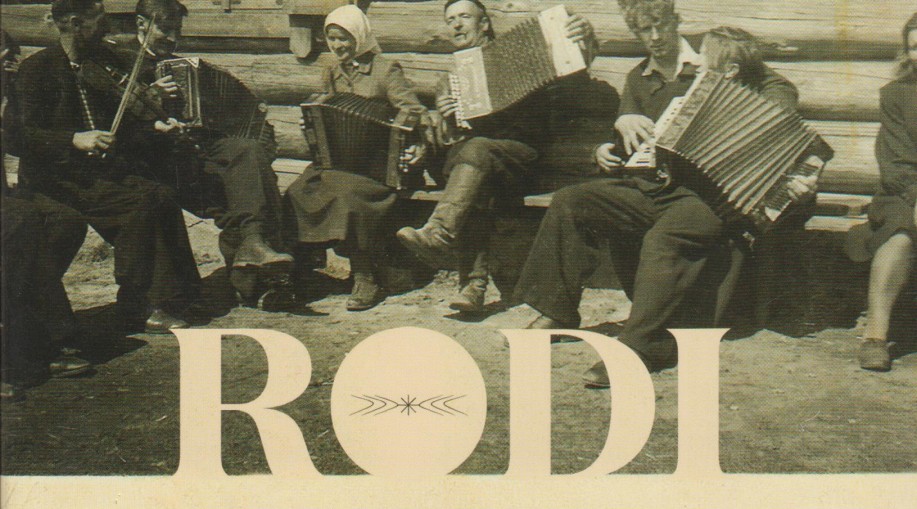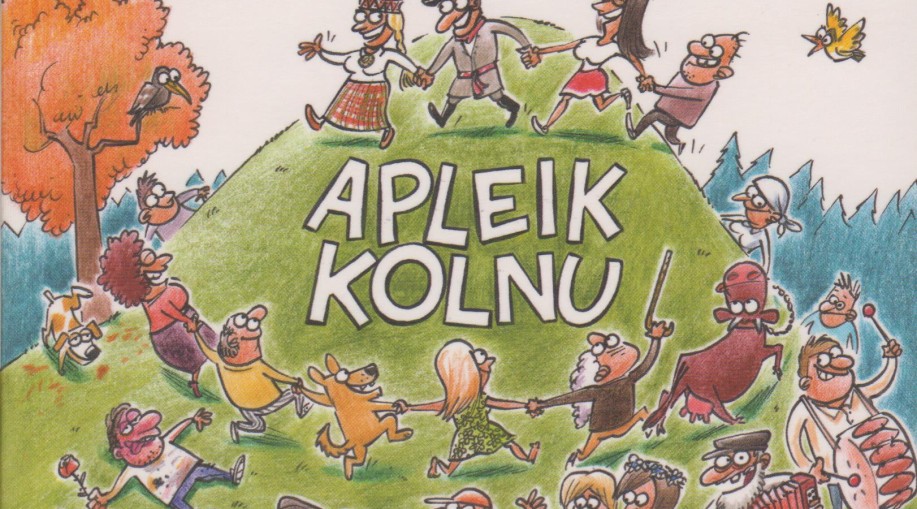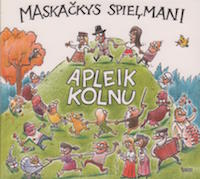Laimas Muzykanti, the Daugavpils based post-folk group, have released their latest CD entitled Rodi (or ‘Relatives’ in the Latgalian dialect of Latvian). Founded in 1995 and led by singer, arranger, kokle player, accordionist and general multi-instrumentalist Artūrs Uškāns, the group has, over its twenty year history, performed mainly Latvian and Latgalian folk songs both in traditional ways as well as in more contemporary arrangements.
Artūrs Uškāns is joined by Inga Zeile on vocals and fiddle, Kristīne Kārkle on vocals and fiddle, Inta Uškāne on vocals, flutes and percussion, Armands Varslavāns on guitars, Matīss Uškāns on vocals and drums and Valdis Rundzāns on bass guitar.
The record begins with Laimas Muzykanti’s version of the Latgalian folk song “Vokors īt” (a song also performed by folk group Laiksne on their album Putra), a song about the approaching evening. From its soothing, slightly melancholic accordion introduction, later joined by guitars and flutes, Uškāns’ arrangement of this song turns it into a call and response style – where the women express their sadness about the men leaving, but the men respond that the women should not be sad – they will return to the homestead in the evening (then, later in the song, reversing the roles).
The group takes a more contemporary/world music approach to their arrangement of the folk song “Ķēvīt, mana svilpastīte” (which on the album is combined with the “Baraboļa” dance). The song is performed at a frenetic pace, perhaps appropriate considering that it starts out about a simple-minded horse that runs from Riga to Jelgava. Concluding the song with the “Baraboļa” dance brings the piece to an appropriately energetic conclusion.
Guitars with a hard rock sound begin “Upe nesa ozoliņu”, another vigorous outing from the group. This is a different melody than the most commonly sung version of this folk song (which is much calmer), but Laimas Muzykanti’s version of it is memorable for its spirited performance. As the group describe themselves in the notes – “the group’s style varies considerably, just as folk songs vary widely in their character and content” – leaving performers free to interpret songs as they wish.
Both “Upe nesa ozoliņu” and the group’s arrangement of the folk song “Gauži raud saulīte” feature the LLB (Latvia Lithuania Belarus) Ethnographic Orchestra. The orchestra adds many new and varied instruments to the mix – including bagpipes, bayan, dulcimer, among many others. As the song swells to a crescendo, the mix of the instruments and folk singing provides for an emotional high to this sad song that implores the sun to stop its crying, as God will provide more of what has been lost.
Though most of the album is folk song arrangements, Artūrs Uškāns also displays his own songwriting talent on the song “Sorgeņģeļs”, a wistful ballad. Beginning with just vocals and guitar, then building in intensity as the song progresses, the song is a fitting conclusion to the album, and fits in nicely and naturally with the rest of the folk song arrangements.
The CD packaging includes notes on the group and each song in both Latvian and English (though, unfortunately, does not include the lyrics to the songs). Additionally, in keeping with the theme of the album – “relatives” – there are also notes about what a gathering of relatives in Latgale is like (including not just catching up, but drinking beer and discussing politics until the women begin a song and, over the course of the night, many long forgotten songs are sung).
Deftly moving between various styles, but at all times engaging and enjoyable listening, on the album Rodi Laimas Muzykanti and leader Artūrs Uškāns reaffirm their place as one of the most notable and talented folk groups in Latvia. Weaving unique Latgalian elements through many of their songs, and using both traditional and non-traditional instruments, the album is a particularly satisfying listen. One hopes that after this enjoyable visit by the relatives that they return soon!
For further information, please visit the Laimas Muzykanti Facebook page.
Rodi
Laimas Muzykanti
Lauska LAUSKA CD056, 2015
Track listing
CD
- Vokors īt
- Miķeļa dziesma
- Ķēvīt’, mana svilpastīte/Baraboļa
- As gribieju mežā braukt
- Div’svecītes
- Jāņu dziesma
- Upe nesa ozoliņu (“Čukai ņukai”)
- Gauži raud saulīte
- Lielais Jānis
- Muote
- Krūga Madaleņa
- Sorgeņģeļs








